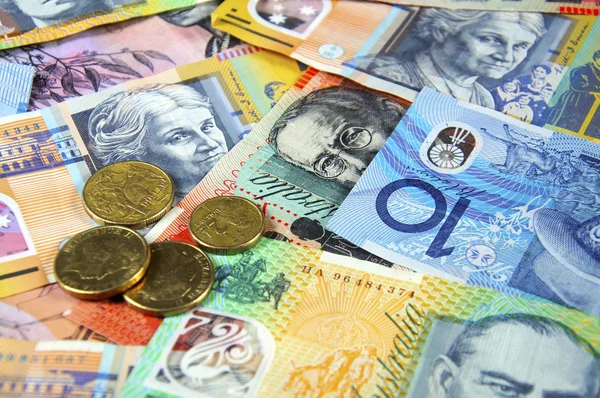Australian Dollar (AUD) regained composure on Tuesday, clawing back earlier losses against the US Dollar (USD), driven by a notable improvement in risk appetite. This change in tone comes on the back of reports suggesting the United States is walking back from its ambitious goals for comprehensive tariff deals. According to the Financial Times, US trade officials are pivoting toward phased agreements with select countries to meet the July 9 deadline set by President Donald Trump, who had earlier threatened to reintroduce severe tariffs.
The shift signaled a thaw in global trade tensions—an environment where commodity-linked currencies like the AUD typically thrive. This helped the Aussie recover despite a mixed domestic backdrop.
China PMI Surprise Supports Australian Dollar Strength
A key tailwind for the Australian Dollar came from China, Australia’s top trading partner. The Caixin Manufacturing Purchasing Managers’ Index (PMI) surged to 50.4 in June, jumping from 48.3 in May and beating forecasts for a 49.0 print. A reading above 50 indicates expansion in manufacturing activity—a strong sign that China’s industrial sector is regaining strength.
This upside surprise in China’s PMI—especially from a private-sector source like Caixin—boosts confidence in Australian exports. Iron ore, coal, and LNG shipments to China are significant drivers of Australia’s trade surplus. A healthier Chinese economy typically correlates with higher demand for Australian commodities, thereby supporting Australian Dollar.
Domestic Data Mixed: PMI Drops, Credit Slows
Despite external positives, the Australian macro data was underwhelming. The S&P Global Australia Manufacturing PMI fell to 50.6 in June from 51.0 previously, with factory output slipping to its weakest level since February. The decline was largely attributed to elevated inventories and weak market conditions.
In addition, Australia’s private sector credit growth eased to 0.5% in May from 0.7% in April. The slowdown was primarily due to reduced business lending, which fell to 0.8% from 1.0% the prior month. While household credit remained stable, business confidence remains subdued.
However, inflation indicators continue to support the Reserve Bank of Australia’s (RBA) cautious policy stance. The TD-MI Inflation Gauge ticked up by just 0.1% month-over-month in June, rebounding from a 0.4% decline. Crucially, both headline and core inflation metrics remain within the RBA’s 2–3% target range.
US Dollar Weakens Amid Fed and Fiscal Jitters
While the Australian Dollar found renewed strength, the greenback continues to struggle. The US Dollar Index (DXY), which tracks the USD against a basket of six major currencies, has been on a downward trajectory since June 19, now hovering around 96.70. The main culprits: policy uncertainty at the Federal Reserve and looming fiscal imbalances.
The Fed’s preferred inflation measure—the core PCE Price Index—rose 2.7% year-on-year in May, in line with expectations. While this confirms persistent inflation pressures, several Fed officials, including Minneapolis Fed President Neel Kashkari, signaled openness to cutting rates starting in September if inflation continues cooling.
The political dimension adds complexity. President Trump recently hinted he may replace Fed Chair Jerome Powell in 2026 and reportedly narrowed his list of replacements to three or four candidates. Speculation over “shadow chairs” and threats to Fed independence have rattled investors, undermining USD credibility.
Fiscal Clouds Darken USD Outlook
In parallel, Washington faces fiscal headwinds. The US Senate is debating a sweeping tax-and-spending package that could add $3.3 trillion to the national debt. Bond markets are watching closely, with concerns rising over long-term debt sustainability and Treasury issuance. These fears are beginning to weigh on the USD and support safe-haven buying elsewhere.
The US Treasury yield curve has flattened in recent weeks, signaling concerns over slower growth. If fiscal policy fuels more debt without real productivity gains, the Fed may be forced to maintain tighter policy for longer—or face stagflation risks.
US ISM Manufacturing PMI in Focus
Looking ahead, traders await the US ISM Manufacturing PMI for June. Markets are pricing in a slight decline from May’s reading of 48.7. A sub-50 reading would reinforce concerns that the US industrial sector is contracting—another bearish catalyst for the USD.
Given the divergence in China’s rising PMI and the US’s likely stagnation, the Australian Dollar pair may see upside momentum, especially if the ISM data confirms growth pessimism.
RBA Still Cautious as Inflation Stabilizes
The RBA remains on hold, with Governor Michele Bullock reiterating that interest rate hikes are not off the table but that current inflation trends are encouraging. Wage growth has moderated, and household spending remains constrained by high mortgage costs.
With global central banks shifting toward easing (the ECB is expected to cut again in Q3), the RBA may wait to see how the Fed acts before adjusting its own policy. If the Fed cuts in September, as Kashkari suggests, the RBA could follow suit by year-end, depending on inflation and labor market developments.
Technical Outlook: Australian Dollar Faces Resistance Near 0.6720
From a technical standpoint, AUDUSD is consolidating near the 0.6700–0.6720 resistance zone. A break above 0.6725 would open the door toward 0.6780, while support lies near 0.6640. The pair is tracking the 50-day and 100-day moving averages closely, with momentum indicators mildly bullish.
Volume remains moderate ahead of the US ISM release, and traders are likely to adopt a wait-and-see stance until clearer Fed direction emerges.
Market Expectations
US ISM Manufacturing PMI (June): Expected at 48.5 vs. 48.7 prior
US Jobs Data (NFP – Friday): Crucial for Fed trajectory
China CPI/PPI (Next week): Will impact Aussie via trade links
RBA Policy Decision (Next meeting): Expected hold, dovish tone possible
Fed Powell Testimony (Next week): Key for Fed guidance and USD direction
Conclusion:
The Australian Dollar remains in a tug-of-war between global optimism and domestic softness. The Aussie’s rebound is supported by improved trade sentiment and Chinese data, but upcoming US data and Fed signals will dictate the next major move. If the Fed confirms a dovish pivot, the AUD could extend gains—but only cautiously, as Australia’ls own data landscape remains fragile.
Disclaimer: This blog is for informational purposes only and does not constitute financial advice. Always conduct your own research and consult a professional advisor before making investment decisions.
[sc_fs_multi_faq headline-0=”h2″ question-0=”Why did the Australian Dollar recover today?” answer-0=”The AUD rebounded on improved global risk sentiment after the US signaled a softer stance on trade talks and due to a strong Chinese Caixin Manufacturing PMI.” image-0=”” headline-1=”h2″ question-1=”How does China’s PMI impact AUD?” answer-1=”As Australia’s largest trading partner, stronger Chinese manufacturing data boosts demand expectations for Australian exports, supporting the Aussie Dollar.” image-1=”” headline-2=”h2″ question-2=”What are the main challenges facing the AUD?” answer-2=”Domestic PMI softness, slowing business credit, and cautious RBA policy remain headwinds. Global growth concerns and falling commodity prices can also pressure AUD.” image-2=”” count=”3″ html=”true” css_class=””]









